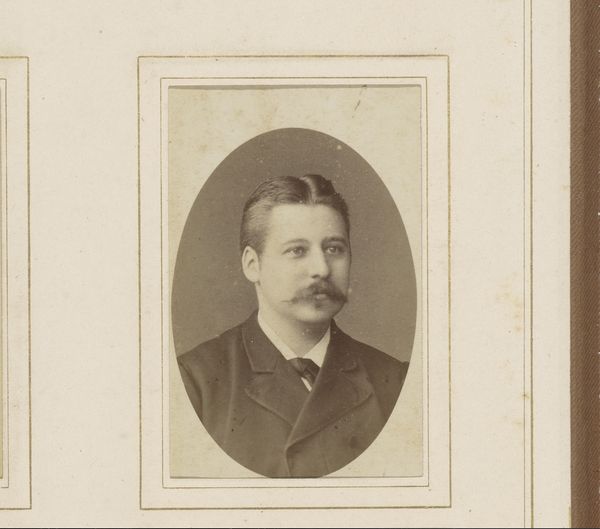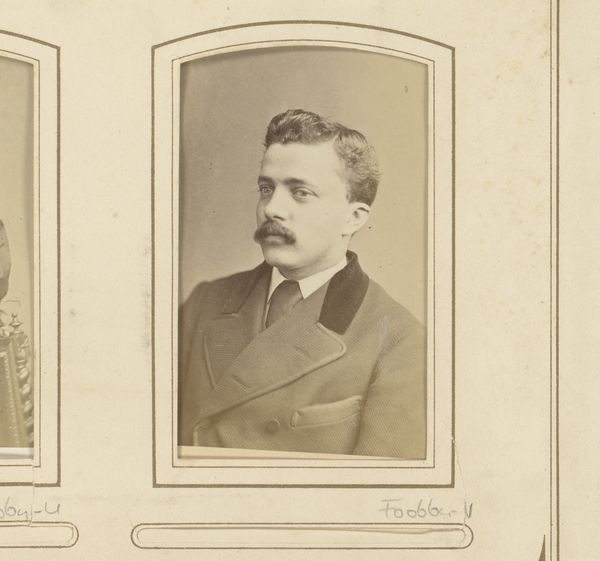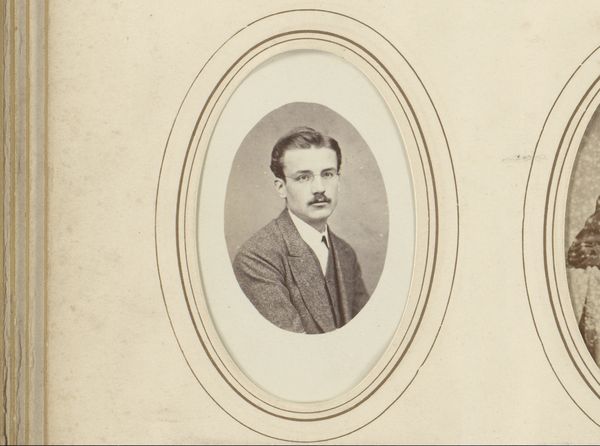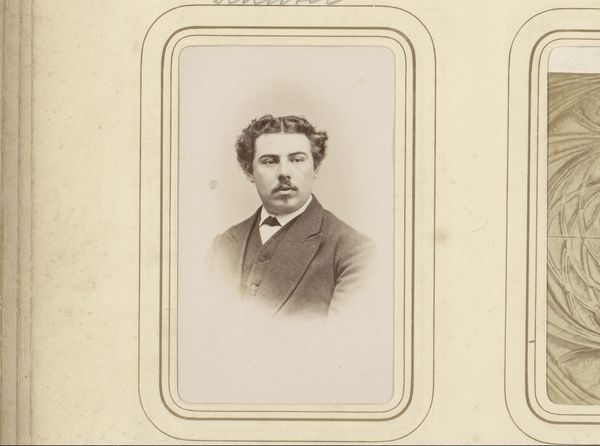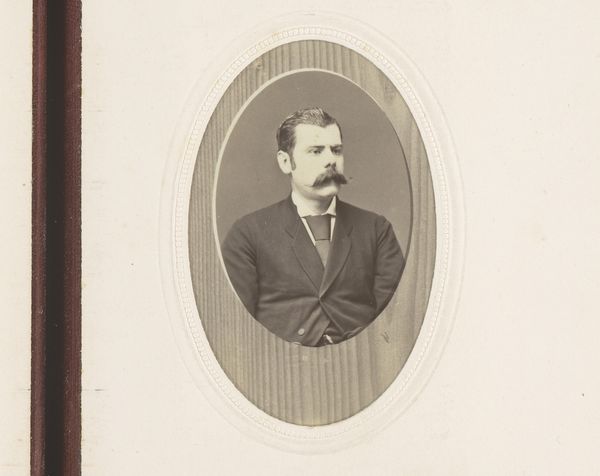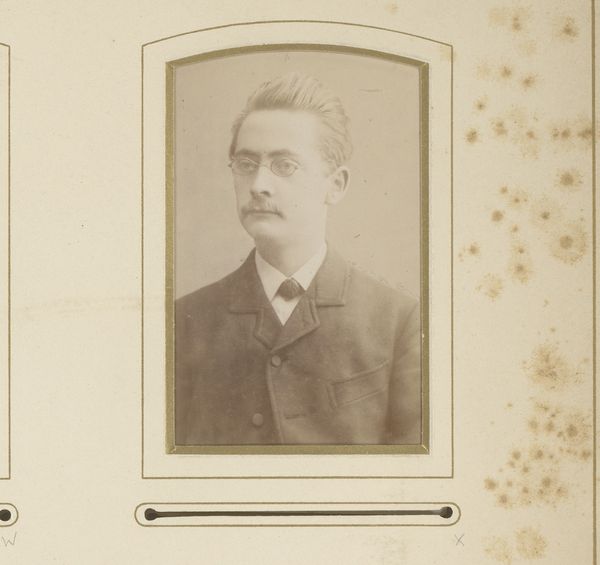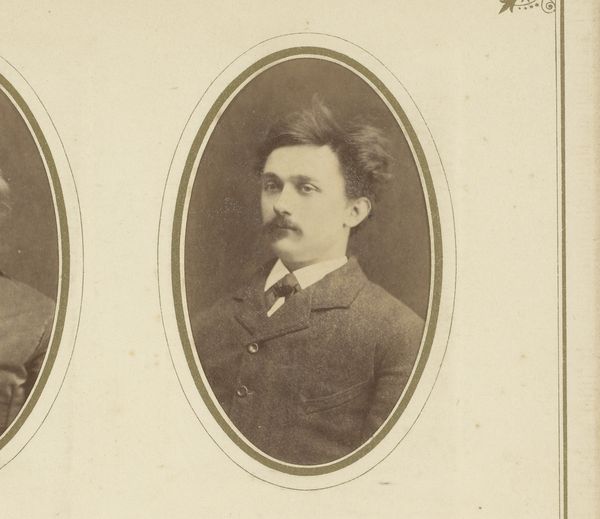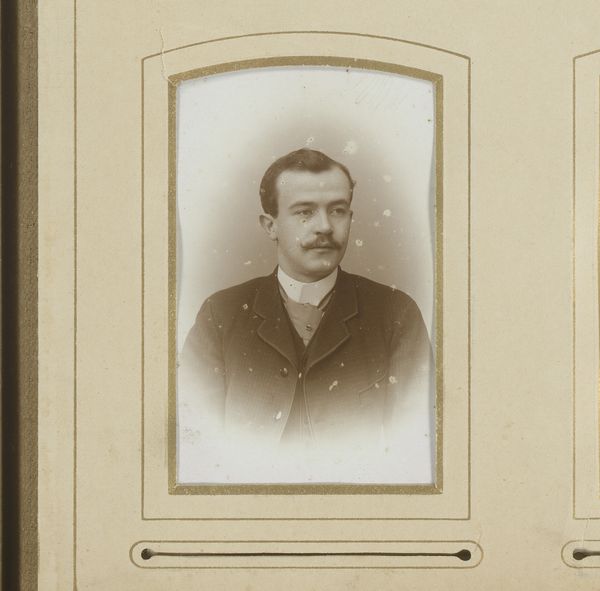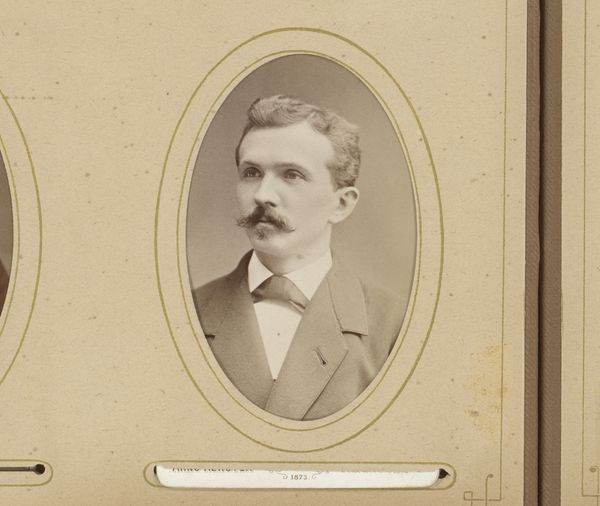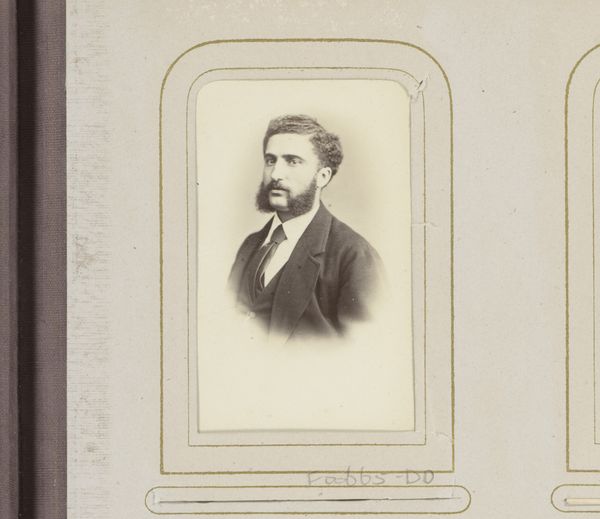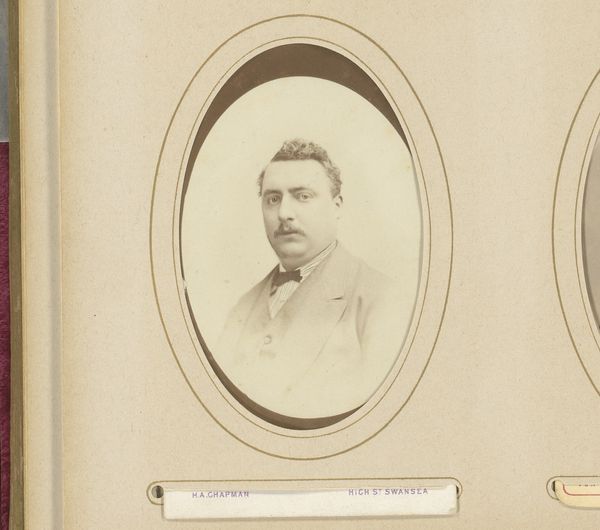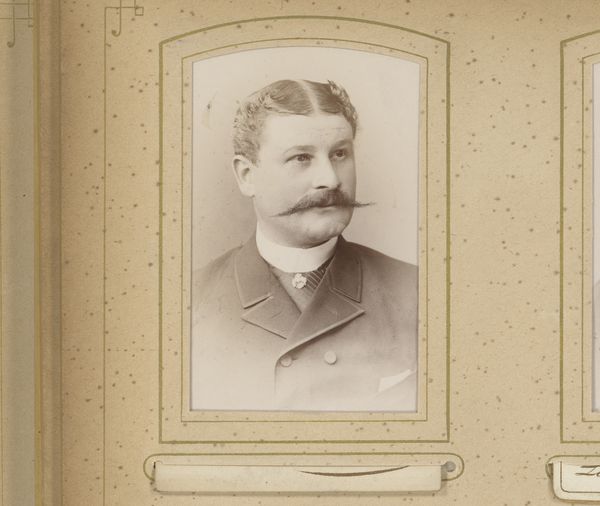
photography, gelatin-silver-print
#
portrait
#
photography
#
historical photography
#
portrait reference
#
gelatin-silver-print
#
19th century
#
realism
Dimensions: height 81 mm, width 52 mm
Copyright: Rijks Museum: Open Domain
Curator: Here we have "Portret van een man met snor," or "Portrait of a Man with a Moustache," created between 1877 and 1900 by Jan Goedeljee. It's a gelatin silver print. What strikes you immediately about it? Editor: He looks… vaguely apologetic. Or perhaps just deeply serious in that uniquely Victorian way. The oval frame feels like it’s pressing him, capturing a moment of quiet vulnerability. It makes me wonder about all those other untold lives of men during the late 19th century. Curator: That’s a great observation! The seriousness is typical of portraiture from that era. Photography was still relatively new, a formal affair often imbued with middle-class aspirations and social status. His posture, clothing—the very carefully styled moustache—speaks to a constructed identity for public consumption. Editor: The sepia tone really sells it. I wonder, did he approve of this version? I can't help feeling some empathy, because sitting like that looks rigid and boring to me now! It might be more about what the artist, Goedeljee, wanted than the individual man. Curator: Exactly. Goedeljee was a prominent photographer, and it's through his lens, both literally and figuratively, that we encounter this subject. We're witnessing not only a man but also the aesthetics and conventions of 19th-century photography—its inherent power dynamics, for one. The portrait conforms to established ideas of bourgeois masculinity and displays its outward signs: seriousness, sobriety, control. Editor: Is that seriousness a burden or a badge? The weight of expectations seems embedded in every dark-brown shadow. I mean, maybe that ‘stache was his personal declaration of individuality within such restrictions? Curator: Precisely! He might not have been aware, however, of contributing to broader social narratives. But these early photographs, however unassuming they might seem, helped construct ideas of self, gender, and belonging that endure even now. He might be both asserting and conforming to the norms. It’s a negotiation played out through the photograph, through posture and gaze. Editor: Thinking about the artist, there’s a layer of intimacy removed by that constructed-ness, though—because ultimately you wonder about all that’s not revealed or accessible. Which seems sort of tragic now, I guess? A perfect photograph of imperfect honesty. Curator: It does highlight the distance that still remains. A small sepia-toned echo across time, revealing our shared past—and the ways we’ve both changed and stayed exactly the same.
Comments
No comments
Be the first to comment and join the conversation on the ultimate creative platform.
